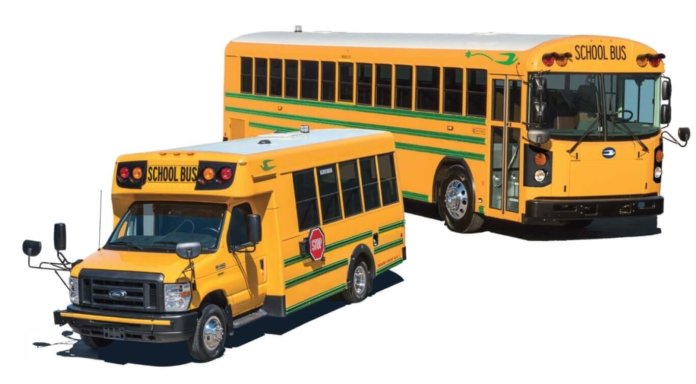Blue Bird Corp. has announced that a number of its electric buses have passed a technical evaluation phase by the California Energy Commission (CEC) and, in turn, can be ordered through GFO-18-604, a CEC Clean Transportation Program grant.
According to the bus company, school districts in California are eligible for hundreds of thousands of dollars in grant funding toward Blue Bird’s Type A Electric Micro Bird, Type C Electric Vision and Type D Electric Rear Engine school buses.
The Micro Bird Type A Electric bus is equipped with a wheel chair lift and is qualified for over $291,000 in grant funding, while the Type C Vision and Type D Rear Engine school buses with and without wheelchair lifts qualify for over $319,000 in grant funding for each bus.
“We are proud to have passed the technical evaluation for this bid, allowing districts to afford these amazing, cutting-edge buses,” says Phil Horlock, president and CEO of Blue Bird. “Blue Bird pioneered electric school bus technology as early as 1994, and with our proven, long-term partnership with Cummins, we know that customers can depend on our new generation of electric buses.”
The Blue Bird electric school buses currently operating in California have a network of service centers that specialize in electric bus technology, including A-Z Bus Sales.
“This is exciting for districts who are now able to afford to bring Blue Bird’s electric buses into their existing fleets,” comments John Landherr, president of A-Z Bus Sales. “With over 12 A-Z Bus service and Cummins service locations across the state, districts can rest assured that these buses will be well-supported throughout their lifetime. It is a true win-win for students, school districts and communities of California.”






Electric buses are not environmentally friendly. Production, disposal, and mining of rare metals necessary for batteries has a significant negative environmental impact. Electric transportation with a “third rail” power surface makes sense—the use of batteries as the energy source does not. Batteries also offer short range, long recharging times, and inadequate power when compared to buses that run on Renewable Natural Gas, a system that uses EXISTING internal combustion engines modified for RNG instead of diesel. RNG is a carbon negative, zero emission fuel. Much more environmentally friendly that electric transportation using batteries.
Please cite the source you are using on the environmental impact.